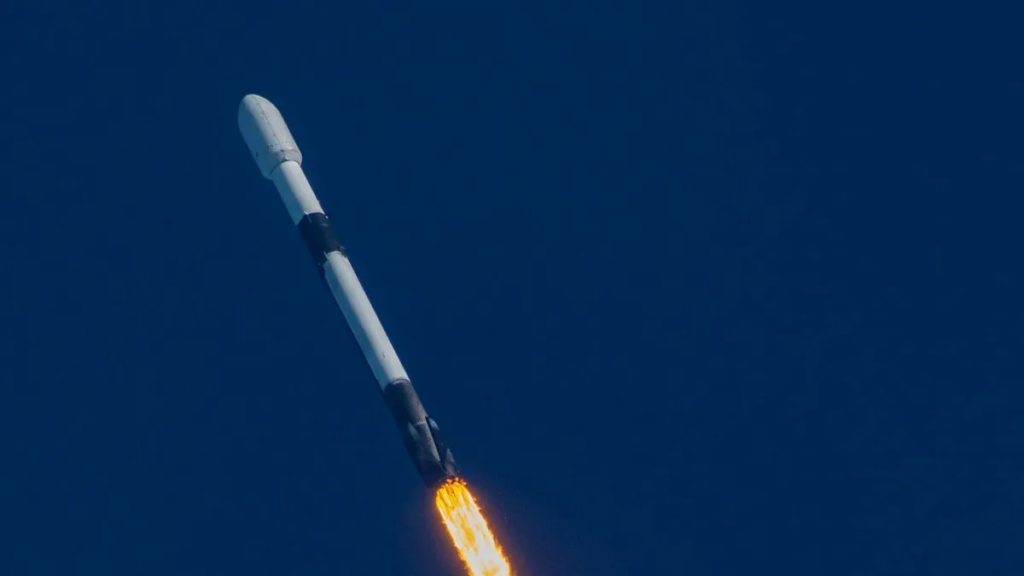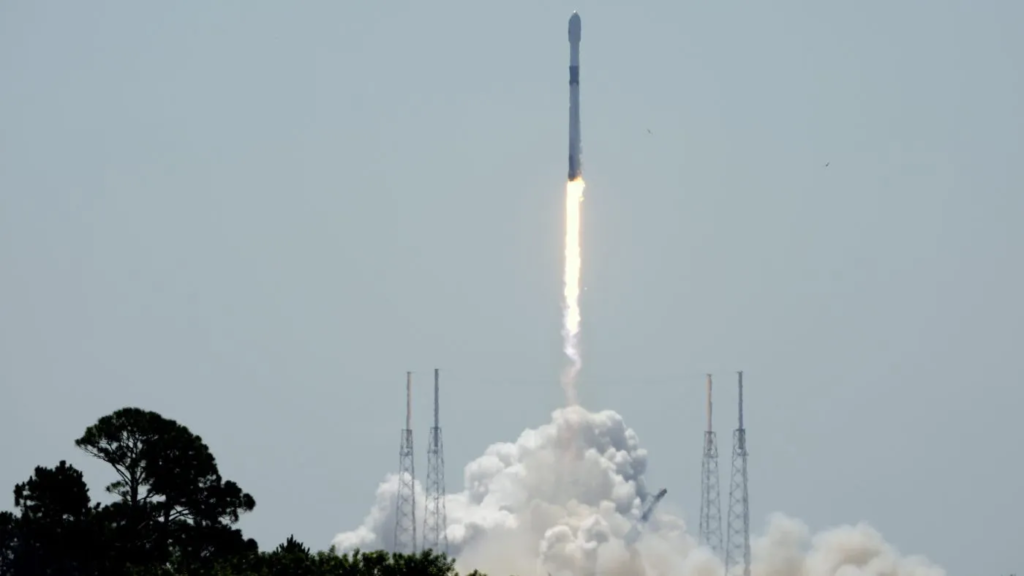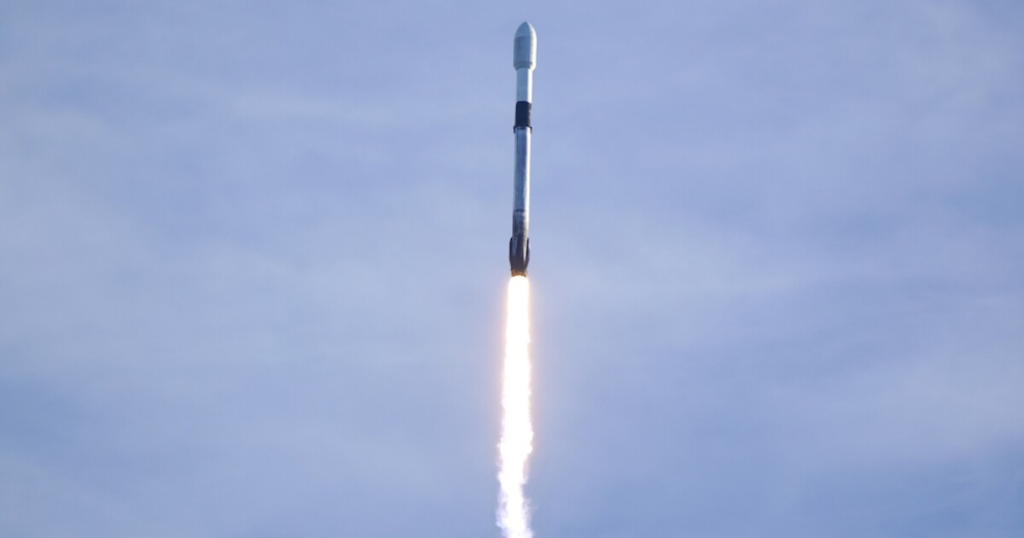
Why Europe Is Using SpaceX As A Launch Provider
Europe has managed to put itself in a tough position as they are at the moment, without a launch vehicle. In this case, earlier this year the Ariane 5 rocket, Europe’s go-to, was retired and launched for the last time. The plan was to replace this system with Ariane 6, however, continued delays have pushed its maiden flight back quite a bit. Something a lot of spacecraft and satellite companies were not planning on.
This leads us to today as the European Space Agency is somewhat forced to use U.S. providers like SpaceX. Just yesterday we got news that SpaceX signed a new deal to launch some key European satellites. With delays continuing to stack up for Ariane 6, this is a pattern we could see even more of in the next few months.
From Europe’s point of view, despite the fact that the Falcon 9 for example is affordable and reliable, they would much rather be spending that money to support and grow its own program. Here I will go more in-depth into the new launch contract, Europe’s current predicament, Ariane 6 delays, and more.
New SpaceX Contract

Yesterday on October 23rd, it was reported that a new launch contract had been signed between Europe and SpaceX. Specifically, SpaceX and the European Space Agency recently signed an agreement for two launches next year, each carrying two Galileo satellites, said the agency’s director of navigation. Granted, “the European Commission, the European Union’s executive arm, along with EU member states, must still give final approval for the deal. That is likely to happen before the end of the year,” officials said.
The launch will happen in the United States on a Falcon 9 rocket in 2024, assuming the deal goes through. In another quote, a spokesman for the European Commission said it is “taking all necessary steps to ensure that the Galileo constellation continues to provide outstanding services in the coming months and years.” In other words, they are willing to use SpaceX and the Falcon 9 to ensure the satellites are launched on time. The Wall Street Journal also reported that “The SpaceX Galileo contract is the first time Musk’s company has been tapped to launch a satellite by EU institutions containing classified equipment. It is also the first time Galileo satellites would be launched from outside EU territory since test devices were launched from Kazakhstan 15 years ago;
This comes back to the fact that Europe has been hesitant to use U.S. options for launch. Usually, and for a long time up until recently, Europe had the Ariane 5, and if for some reason that vehicle wasn’t available or compatible, they could use Russia’s Soyuz rocket. Thanks to the current conflict in the world, the Russian option is off the table. Combine this with the fact that Ariane 5 will never launch again, and the issue becomes apparent.
Most recently in August, the ESA confirmed that the first launch of the Ariane 6 would not happen this year and instead was scheduled for 2024. In this case, the director general of ESA said that the inaugural flight of the long-delayed rocket had been rescheduled for some time next year after a series of engine tests planned in the coming weeks. This has established somewhat of a recurring theme as the last formal update ESA provided was in October 2022, when the agency set a launch date of the fourth quarter of 2023.
Back in July, the agency conducted an Ariane 6 countdown test. The vehicle was loaded with propellants and went through a simulated countdown to test launch procedures. That test was scheduled to conclude with a brief firing of the Vulcain 2.1 engine in the Ariane 6 core stage. However, ESA said in a July 25 statement that the firing could not take place “as time ran out.” In addition, ESA said the automated countdown was aborted “due to certain measurements exceeding preset limits.” The firing was later abandoned because the length of the test led to a shortage of liquid oxygen propellant.
That hot-firing was then rescheduled for Aug. 29th. To add to everything, it didn’t take place on the 29th because there was a technical issue affecting the control system that governs the rocket’s critical fluid operations, used for filling the launcher and the automated countdown. “Specialists are working on a solution. The next attempt is planned for 5 September 2023,” an ESA post read.
These various issues are not the best sign for the rocket and likely what is encouraging the company to look to the U.S. for launch options, at least for the time being. Depending on how Ariane 6 performs over the next few months will directly affect whether or not we see even more launches with SpaceX or other U.S. providers.
Falcon 9 Launch Cadence

For the ESA, it’s very hard to ignore the launch options overseas. SpaceX in particular is launching at a rate that has never been seen before within the industry. Last month in September, SpaceX launched the Space Development Agency’s Second Tranche 0 mission marking the 61st launch this year. That also marks the number of launches SpaceX completed in the entirety of 2022, which was a record in itself. Around that same time, Elon Musk tweeted saying, “Great work by the @SpaceX team successfully launching 61 Falcon rocket missions this year! If tomorrow’s mission goes well, we will exceed last year’s flight count. SpaceX has delivered ~80% of all Earth payload mass to orbit in 2023. China is ~10% & rest of world other ~10%.”
This helps put in perspective the significance of these launch numbers and the degree to which SpaceX is leading within the industry. Looking at a chart of Falcon launches going back to 2010, you can see the growth over time. The first 6 years or so saw launches in the single digits before the cadence really started to pick up in 2017. Impressively SpaceX managed to nearly double the launches from 2021 to 2022. As partially mentioned prior, if SpaceX continues at its current pace or increases it, they should be around 90 launches at the end of the year. This would be a 50% increase from 2022.
Not only this, but Elon also tweeted pointing out, “Aiming for 10 Falcon flights in a month by end of this year, then 12 per month next year.” This tweet is actually a very big deal. So far this year SpaceX has averaged around 7.6 launches a month or one every 4 days. An increase in just around 4 to 5 months to 12 per month is ambitious. At that rate, SpaceX would be launching around 144 times a year. This is technically possible, but it comes with its own challenges.
As far as how they have managed this, it comes down to a bunch of different factors including Booster reusability, increased demand, constant manufacturing, and much more. The Falcon Heavy for example has contributed to this record by having an impressive year itself. Already it has launched 4 times this year with another mission scheduled before 2024. Starlink has also played a very big role. SpaceX hasn’t been launching just to launch, but has either filled the Falcon 9 with commercial payloads or Starlink satellites. Starlink provided the extra demand necessary to literally always have a payload available so long as the rocket is ready. By now around 4,600 Starlink satellites are in orbit with another 37,000 or so waiting to be launched. Even though Starship is expected to help that process in the future, there still is plenty of time for the Falcon 9 to help out.
The other obvious contributor is booster reusability. While saving money by not destroying the boosters is a great benefit, arguably the more important is the impact on launch cadence. Refurbishing a booster is a much quicker process than making a new one. Combine this with the company’s determination and they have managed to continue pushing what’s possible regarding launch frequency.
This all connects back to the current situation Europe is facing and what options they have. Realistically, SpaceX genuinely is the more affordable and reliable option for the vast majority of satellites ESA plans to launch. To make matters worse, a different European rocket, Vega C, lost two Airbus satellites after it failed during a launch last December. There are a few European launch provides working on new tech however they still have quite a ways to go. This includes the Spanish company PLD Space and Rocket Factory Augsburg in Germany, which are both still developing their technology.
Not long ago in July, SpaceX launched Europe’s Euclid telescope on a Falcon 9 rocket and is set next year to launch a European spacecraft that will survey an asteroid. It was also reported that “Officials also have moved to launch the EarthCARE mission, which aims to study clouds, aerosols and radiation, with SpaceX. All three flights were originally slated for rockets operated by Arianespace.
This increase in launch contracts with SpaceX could become a pattern in the future and something Europe becomes more comfortable with. In the modern space age, private companies are beginning to lead the industry and competing to lower prices and increase launch cadence. In the United States, this system has contributed to the explosion of demand, launches, and innovation in the industry. Something we will no doubt hear more about in the next few months and years.
Conclusion
Europe just signed another contract with SpaceX that was originally intended to launch on the Ariane 6. Unfortunately for the ESA, continued delays are forcing their hand and making SpaceX one of the only options. We will have to wait and see how it progresses and the impact it has on the space industry.
